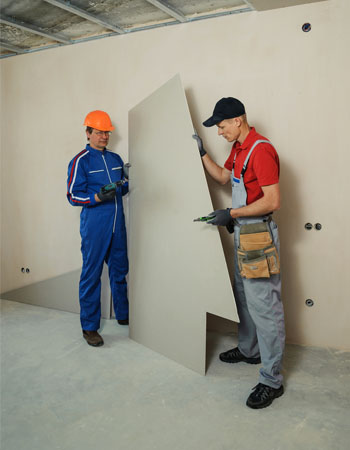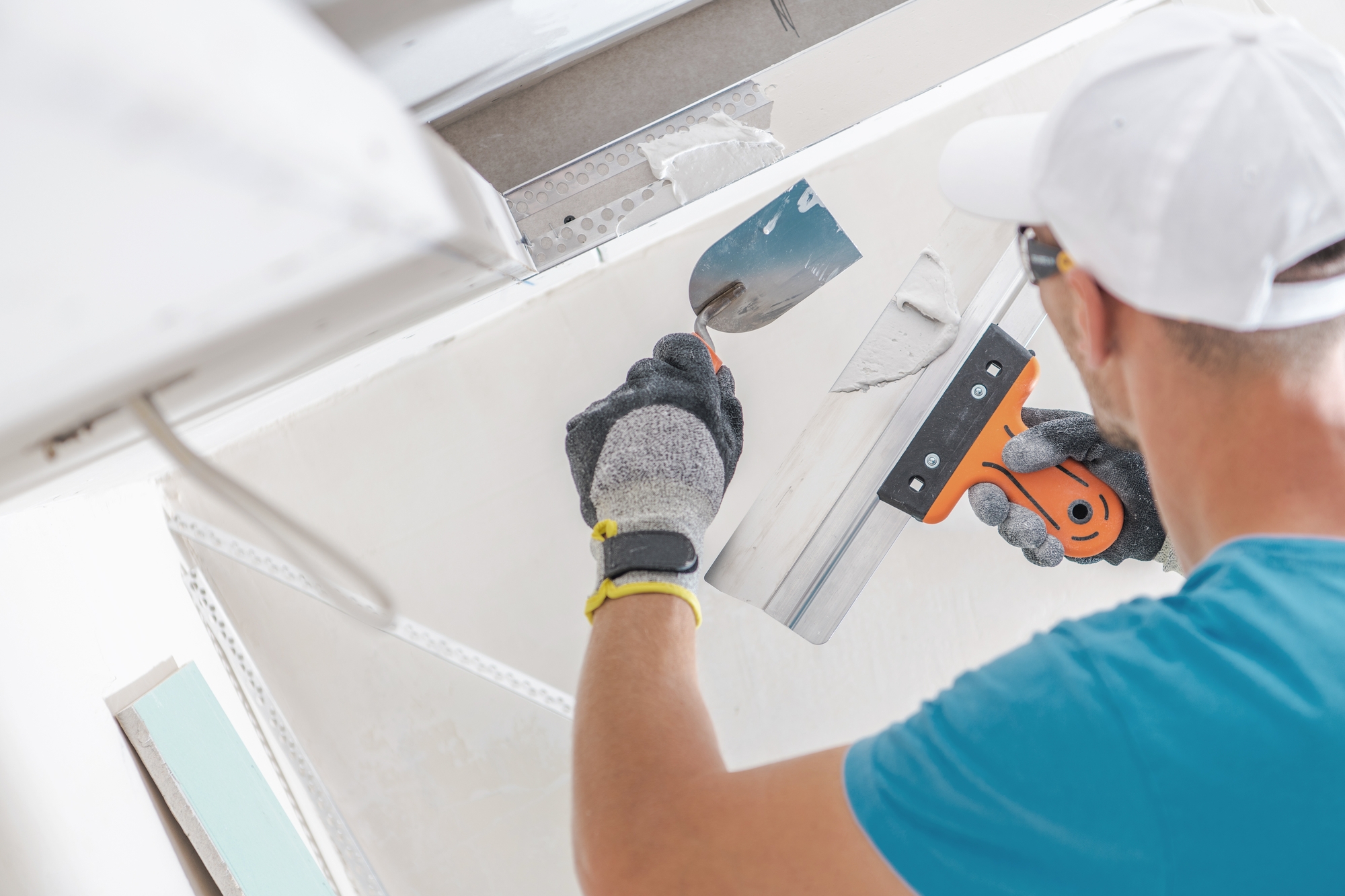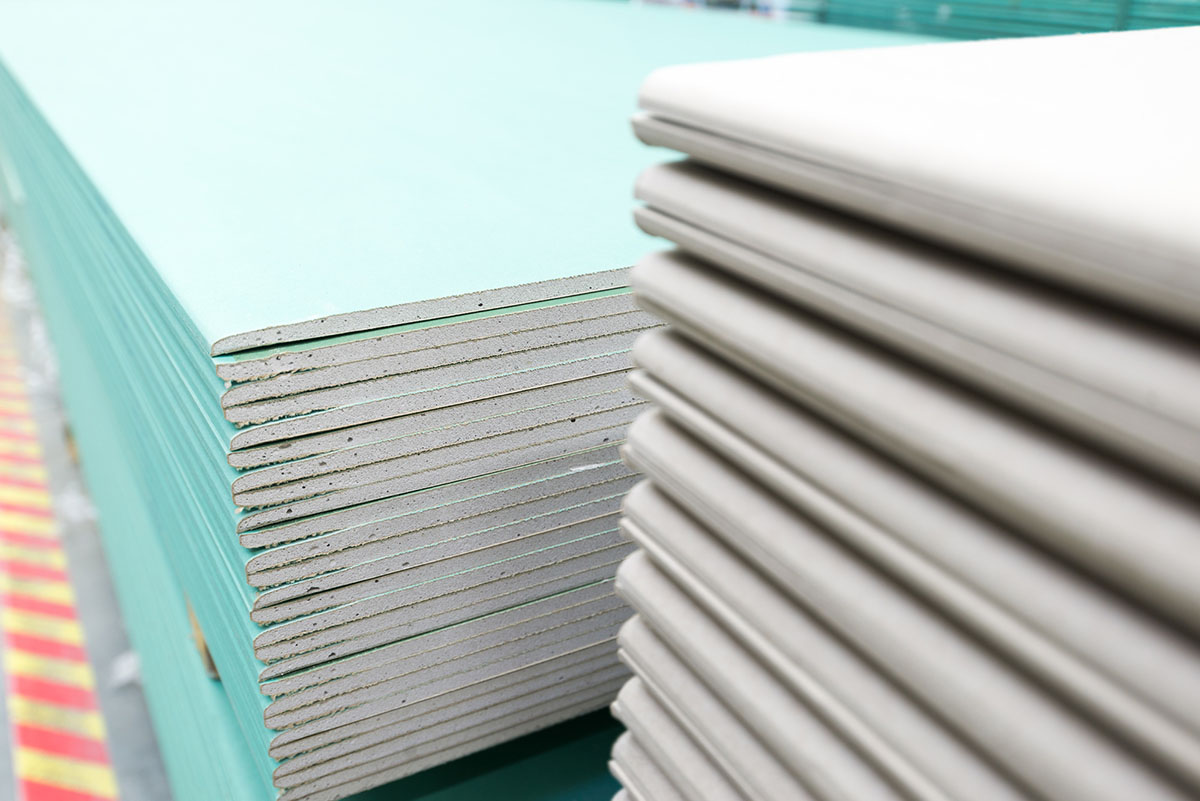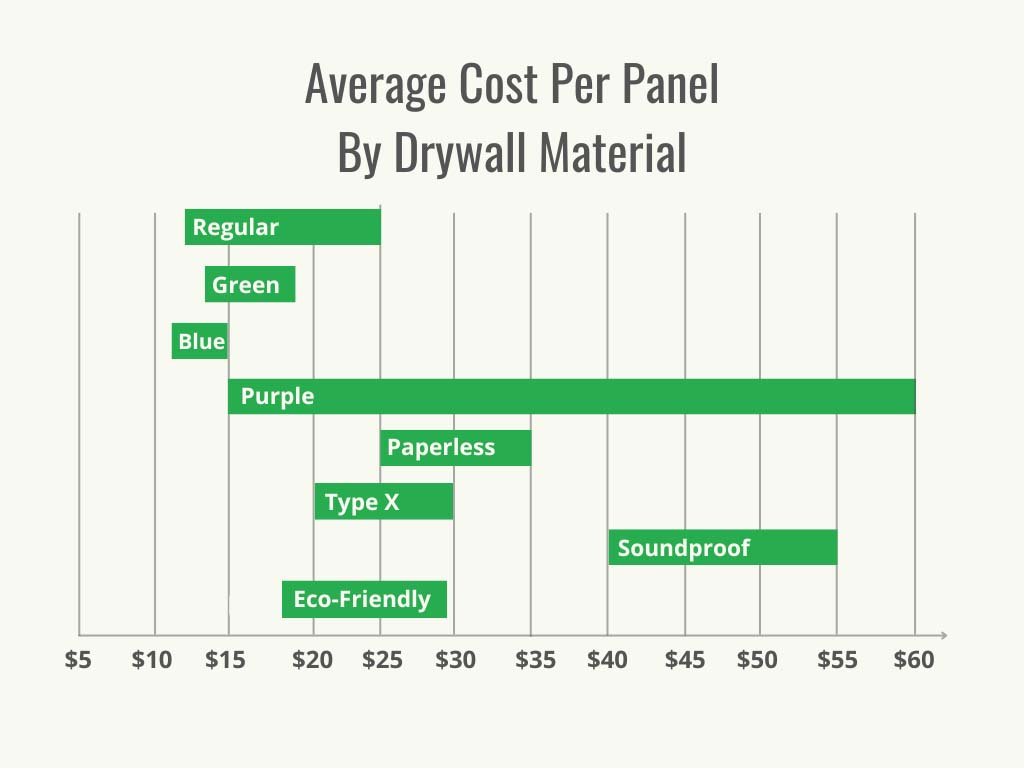How Much Does Drywall Cost?
Hello, my friend, hello again; today we come together to talk about How Much Does Drywall Cost? and hope the blog can help you.
Fresh, beautifully finished drywall is a blank canvas for a homeowner’s creativity and personality. Drywall cost ranges from $12 to $20 per panel, with an average cost of $15 per panel.
- Typical Range: $12 to $20 per panel
- National Average: $15 per panel
Glancing around a home, visitors take in the artwork, photographs, furniture, and even the paint color. The finish on the walls and ceilings underneath the paint doesn’t necessarily draw the eye—unless it’s cracked, slumped, or poorly patched. Drywall is the foundation of most modern walls and ceilings and the replacement product of choice for many older homes. A well-installed smooth or textured surface lets the furnishings and decor in any home shine.
Whether a homeowner is choosing a qualified contractor or learning how to hang drywall themselves, they’ll want to begin with an understanding of the different types of drywall available, the many factors that affect the overall cost of drywall, and the supplies needed to install it. How much does drywall cost? According to Angi and HomeAdvisor, the typical cost of drywall itself is between $12 and $20 per panel, with a national average of $15. Some additional costs are obvious, such as the ones for panels, screws, tape, mud, and joint compound, but other components, such as demolition, transportation, permits, and even the volume of sandpaper needed to get the job done well, might escape notice. In addition, there are several types of drywall available that can provide soundproofing, waterproofing, and fire resistance, along with more basic styles that support tile or shiplap walls. A variety of finishes can complement the style of the home and reduce the cost overall. To make these decisions easier, it’s a good idea for homeowners to calculate the cost of drywall panels and installation.
Need to install drywall?
Maybe it's time to call in a pro. Get free, no-commitment project estimates from professionals near you.
How to Calculate Drywall Cost

Calculating the overall cost of installing drywall in a home is a straightforward formula, but it does include a number of variables and decisions on the part of the homeowner. The following formula can help a homeowner calculate the amount of drywall needed for a project and the total cost.
- Measure the square footage (width times height) of the area that needs to be drywalled, then divide by 32 (if using 4-by-8-foot sheets) or by 48 (if using 4-by-12-foot sheets) to determine how many panels of drywall will be needed.
- Add the cost of a half-gallon of ready-mix compound per 100 square feet.
- Add the cost of 40 feet of drywall tape per 100 square feet.
- Add the cost of drywall screws: In general, 3 pounds of drywall screws will cover approximately 1,000 feet.
On average, it will cost between $200 and $300 to purchase enough drywall panels for a 12-foot-by-12-foot room. There are, of course, additional factors in calculating the overall material costs, including the number of odd cuts that create additional waste, corners, and the type and thickness of the panels themselves, but this formula should provide homeowners with a good estimate of how much material they’ll need to get started. It may also be useful for homeowners to plug these numbers into an online drywall calculator for a specific estimate.
Factors in Calculating Drywall Cost
While the math of calculating drywall cost is relatively easy to do, there are significant variables in the figured cost of hanging drywall in any given space. Because drywall is used in so many different areas of the home, there are varieties in the shape, thickness, and additional materials incorporated into the panels that create a wide cost range. In addition, regional considerations, including local construction booms, weather and transportation concerns, and even the season, can affect local pricing to make it vastly different from the national average drywall cost. There are some concrete factors, however, that are determined by the homeowner and provide an opportunity to save a little money.
Panel Size
Drywall panels come in standard sizes of 4 feet by 8 feet or 4 feet by 12 feet. Depending on the size and dimensions of the room, one panel size may be more efficient for the space and will create less waste than the other. While 4-by-12-foot sheets are a bit more expensive, the homeowner may need fewer sheets overall if their ceilings are high, which can save money along with time needed for cutting and taping.
Installation Location
The location where drywall is being installed will affect the overall cost. This is due to both the square footage of the room and the type of drywall that will be used. The cost to drywall smaller rooms, such as bathrooms, is lower overall—between $430 and $500—but the price per square foot may be higher. Often, green or purple boards are used instead of standard drywall for bathrooms because they are more moisture-resistant, and this can increase the cost. A room with larger square footage, such as a living room, will cost about $960 to $2,800 to drywall. The cost per square foot for basements and garages may be less because these areas are not typically finished with the same high-quality materials that are used for living spaces.
Drywall installation is no easy task
Maybe it's time to call in a pro. Get free, no-commitment project estimates from professionals near you.
Drywall Thickness
Drywall is available in four thicknesses: ¼ inch, ⅜ inch, ½ inch, and ⅝ inch, with cost increasing with thickness. The cost for ¼-inch drywall is about $10 to $12 per sheet, and this type is mostly used for repairs to fortify existing walls. The cost of ⅜-inch drywall can run up to $15 per sheet; this type is mostly used when ½-inch drywall is too large for an existing space. Half-inch drywall is ideal for almost all spaces and can cost anywhere between $10 and $20 per sheet. The thickest drywall is ⅝ inch, and this type is almost exclusively used for soundproofing. It costs about $13 to $75 per sheet. Choosing the correct thickness for the project can help lower the overall cost.
Labor
Depending on the application of the drywall, hiring a qualified professional drywall hanger may be the best bet. Hanging and finishing drywall are two separate costs: The average cost to hang drywall is $0.15 to $0.65 per square foot. Taping and mudding drywall after it’s hung can range from $0.40 to $0.70 per square foot, while sanding and priming costs between $0.10 and $0.50 per square foot. The cost to finish the drywall ranges from $0.50 to $1.15 per square foot. Combining these costs gives a total drywall installation cost range of $1.15 to $3 per square foot.
Finishing
Drywall finishing is rated from level 0 to level 5. What follows are the finishing ratings and their typical costs.
- Level 0. A level 0 finish job means the drywall is screwed into the studs: No mudding or taping has been done. This service costs between $0.30 and $0.80 per square foot.
- Level 1. Level 1 includes mudding and taping the seams and costs between $0.70 and $1.50 per square foot for labor. Level 1 is not a complete finish and is common for attics and basements.
- Level 2. Level 2 adds a skim coat of joint compound. This finish is not usually suitable for a living space, but it’s more complete than a level 1 finish. Level 2 finishing costs $0.80 to $1.75 per square foot.
- Level 3. Level 3 adds a complete coat of joint compound and sanding. This finish costs $0.90 to $2.50 per square foot.
- Level 4. Level 4 results in drywall that is smoothed, sanded, and primed, but it may have surface imperfections. This finish is a good base for tiling or wallpaper, but is also suitable simply for painting. Level 4 finishing costs between $1 and $3 per square foot.
- Level 5. A level 5 drywall finish includes a full, smooth coat of joint compound over the entire wall along with primer that has been sanded. The drywall is ready for even glossy paint, as there are almost no imperfections. Level 5 finishing costs $1.15 to $3.50 per square foot.
Each degree of finish adds to the total cost of installation. If a homeowner prefers a hand- or spray-finished texture, such as rosebud, swirl, skip trowel, or orange peel, these can be added prior to a level 5 finish, which can reduce overall finish costs. These textures will add to the finishing cost, however, as they add to material and labor costs.
Geographic Location
Drywall prices can vary greatly depending on a homeowner’s region of the country. Prices tend to be lower in midwestern states. For example, prices in Ohio range from $7.85 to $12.10 per panel, whereas homeowners in California will pay between $11.85 and $19.80 per panel. On the East Coast, drywall costs average about $10.35 to $17.50 per panel.
Project Scope
Surprisingly, it can be more expensive per square foot to drywall a small room than a larger one. Covering a larger area provides more opportunities to use full sheets or scraps to fill interrupted walls, so the overall cost drops. It is least expensive when homeowners decide that hanging drywall in the entire house all at once is the best plan. But the cost isn’t only dependent on the total area mathematically: The number of cuts, fitting, and level of finish will also play into the total. Use (and therefore cost) of finishing materials will increase with a higher number of corners and specialized cuts, as corners require a special bead to be tidy. In addition, some drywall contractors may charge a minimum service fee, which could exceed the actual cost of installing drywall in a small space, so bundling several rooms into one project may help you save overall. This fee may also apply if only a small portion of existing drywall is being patched, which costs about $100 on average.

Additional Costs and Considerations
Having established the cost of the drywall materials needed for a project, homeowners may think they know how much they’re budgeting and are ready to head to the home improvement store to get started—but there are other cost considerations to factor in first.
Old Drywall Removal
A cost that many homeowners forget to include is the demolition cost of walls that are being removed and replaced. While some popular home shows make this part of the job seem like a fun, stress-reducing exercise that employs the strength of a hammer, in real renovation scenarios, it’s critical to be careful: Repairing damage to electrical outlets, wiring, plumbing, and other home system components in the wall will add significantly to the overall cost. For a non-load- bearing wall, demolition can cost as little as $1,200, but for load-bearing walls that require the rerouting of systems, it can cost as much as $5,000.
Insulation
For new walls, or walls on the exterior of the home that have been fully removed prior to the new drywall being added, homeowners will need to include the cost of materials and installation of insulation to maintain the energy efficiency of the building. Depending on the type of insulation the homeowner chooses, costs can range from $0.65 to $6.50 per square foot with professional installation.
Texture Application
Applying texture to drywall is a simple way to add visual interest to a room. Texture can be applied to both walls and ceilings in a wide variety of styles depending on the homeowner’s preference. Some textures like Santa Fe and skip trowel have a rustic appearance that is similar to stucco and can be applied by hand. The cost for hand-applied textures is between $1.50 and $2 per square foot. Knockdown and orange peel textures are more subtle and can be applied with a spray. Spray textures are more affordable since they are quicker and easier to apply, and these cost between $0.50 and $1 per square foot.
Customization
Drywall panels are available with water resistance, waterproofing, soundproofing, and with and without paper—there is a type of drywall for almost every application, and the costs vary significantly based on which additional features are required.
A pro can help you install drywall for your project
Get free, no-commitment project estimates from professionals near you.
Permits
Do homeowners need a permit to add or replace drywall? In the case of a simple replacement to clean up a damaged wall, probably not. If the drywall project involves plumbing, electrical work, or a load-bearing wall, or if the location of a wall will change, it’s important for homeowners to check with their local municipality to see if a permit and inspection are required.
Asbestos Removal
Any homeowner living in an older house has likely learned to ask the asbestos question before disturbing existing materials. Asbestos can be present in older plaster walls, tile, and tile adhesive, especially in homes built before 1980, and it can cause serious illness and lung damage if it’s released into the air and inhaled. For homes built before 1980, it’s important to assess the likelihood that asbestos is present, test for it, and have it removed (at a cost of $1,200 to $3,000) before proceeding.

Types of Drywall
Drywall is a catchall term that many people use to describe any wallboard product. However, as drywall has become the standard product for wall and ceiling installations, additional styles and formulations have been developed to meet the needs of different purposes and spaces. Each additional component adds to the cost per panel, but it’s important to choose the best panel for the space in which it will be installed.

Regular
Regular drywall, which is gypsum board sandwiched between two paper layers for stability, is the least expensive option. It’s fine for most bedroom, living room, and dining room walls where moisture resistance is not a key concern. The price per panel will vary based on the panel size and thickness, but it ranges from $15 to $20.
Green Board
Green board drywall adds an extra layer of green material on the outside surfaces of the board, making it water-resistant. Ideal for areas in the home where moisture may be a concern, but not for walls that need to be completely waterproof, green board is often used in kitchens or where it will be covered with tiles and grout. Green board comes in a standard 4-by-8-foot size, and costs range from $14 to $18 per panel.
Blue Board
Blue board drywall uses a different kind of paper to sandwich the gypsum. The blue paper has a smoother finish that holds finish plaster on top, allowing the installer to build a perfectly smooth, seam-free finish. It should not be used with mud, tape, and joint compound. Prices range from $12 to $15 per panel.
Purple
While green board drywall has some moisture resistance, purple drywall offers superior moisture and mold resistance, making it even more effective in situations where dampness, moisture, and water contact may be factors. It can be used in all wall and ceiling applications, but it’s especially effective in moist conditions. Some purple board includes soundproofing and additional fire resistance, so it’s important that homeowners know exactly what they or their contractors are purchasing. Cost ranges from $15 to $60 per panel.
Paperless
Paperless drywall is a newer addition to the drywall range. Covered with fiberglass instead of paper, this option protects the gypsum core from rot, moisture, and mildew and makes the board less likely to break and dent. It retains the texture of the fiberglass on the outside, so it may require additional joint compound to achieve a smooth finish. There are paperless versions of the different variations of drywall, so costs will likely be at the higher end of each range. On average, paperless drywall costs $25 to $35 per panel.
Not sure which type of drywall is right for you?
Maybe it's time to call in a pro. Get free, no-commitment project estimates from professionals near you.